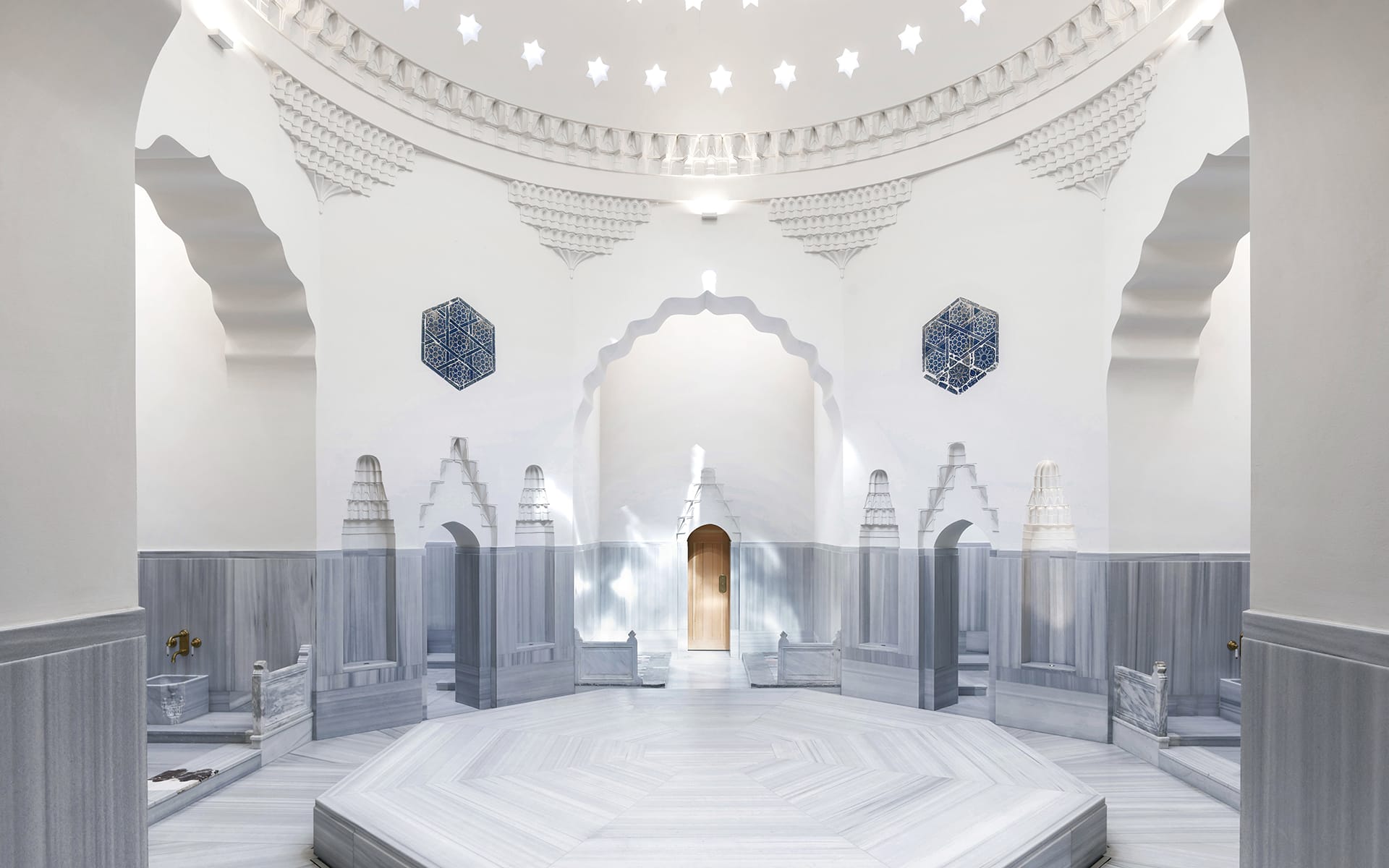Istanbul’s Most Dazzling Hammam Returns to Glory After 13-Year Restoration
Dating to the 16th century, the opulent Zeyrek Çinili Hamam in Turkey features marble-lined interiors and site-specific installations

Not long ago, Turkish bathing culture was in danger of becoming a lost tradition. An important religious ceremony and social gathering act for the Romans, and then the Ottomans, the hammam ritual remained popular until the mid-20th century, when hot running water was introduced to homes.
But a revival is afoot in Istanbul, where hospitality and real-estate company The Marmara Group has restored the historic Zeyrek Çinili Hamam and is using artistic collaborations to return a sense of communal identity to the public bathhouse. “Hammams are tourist spaces now, and there’s no sense of community like we had before,” founding director Koza Yazgan tells Galerie. “But through arts and culture we can recreate that sense of belonging.”
Among the hundreds that dot the city, this particular hammam was constructed between 1530 and 1540 AD by Ottoman architect Mimar Sinan, who built some of Constantinople’s most important mosques, for Hayreddin Barbarossa, a pirate who became the grand admiral of the Ottoman Empire. The name Çinili comes from the Chinese-style blue and white İznik tiles that once covered its interior walls, small fragments of which were uncovered and preserved along with decorative ceiling paintings during the renovation.


More tile pieces are installed in a new accompanying museum, where their fabrication is explained and full splendor digitally recreated. The history of hammam culture is also detailed through artifacts like silver washing bowls, grooming tools, and hundreds of intricately inlaid sandals all collected by Yazgan’s mother—who began the restoration project 13 years ago before retiring. Yazgan then stepped in to work with architect Cengiz Kabaoğlu and project manager Yavuz Suyolcu on reviving the dilapidated building.
The double hammam is divided into men’s and women’s areas—which have been swapped around, for now—each comprising a domed, cavernous Cold Room; a smaller Warm Room; and another domed Hot Room where the bathing ritual takes place. In the Warm and Hot rooms, dramatic blue-gray Turkish marble covers the floors and lower walls, below decorative Muqarna niches whose patterns are echoed on carved washbasins. Contemporary interventions in the Cold Rooms include cedar structures that house changing areas, and loungers for relaxing before and after the soaping and scrubbing. “We tried to keep it as minimal and simple as possible,” says Yazgan, whose efforts for authenticity are evident.

The journey to reopening the Zeyrek Çinili Hamam was prolonged by myriad archeological discoveries, and subsequent preservation efforts. The largest and most significant find was an ancient underground cistern, in which etchings of ships—presumably created by slaves kept inside—were found on the walls. Carefully excavated, this space was utilized during a six-month exhibition called “Healing Ruins,” staged before the furnace reheating.
For the show, the hammam’s artistic director, Anlam Arslanoğlu de Coster, curated and commissioned works by 22 artists that were installed throughout the cistern, bathing spaces, and other parts of the site. “I focused on artists who were already working with questions of memory, history, psychoanalysis, and had a mastery of different materials,” Arslanoğlu de Coster explains. “It was important to reflect on the materiality of the hammam for the show.”

The project’s other notable collaborators included fashion designer Hussein Chalayan, who created bespoke peshtemal towels and sandals for bathers, and uniforms for staff, all fusing tradition and modernity while “drawing inspiration from the history of the building and the architecture,” Yazgan notes. Marble furniture by Theodore Psychoyos and bespoke ceramics by Tülay Madra also reference traditions while imbuing contemporary Turkish craft and culture.


Now open to the public, the hammam complex will continue to host exhibits, talks, and other programming, as well as offer a permanent art trail that includes Elif Uras’s Sitting Bather in the women’s Hot Room. More archaeological research and conservation work will also take place in the background. And while Istanbul’s historic Zeyrek neighborhood is poised for gentrification—which this project may well accelerate—a piece of local tradition will remain for future generations.
